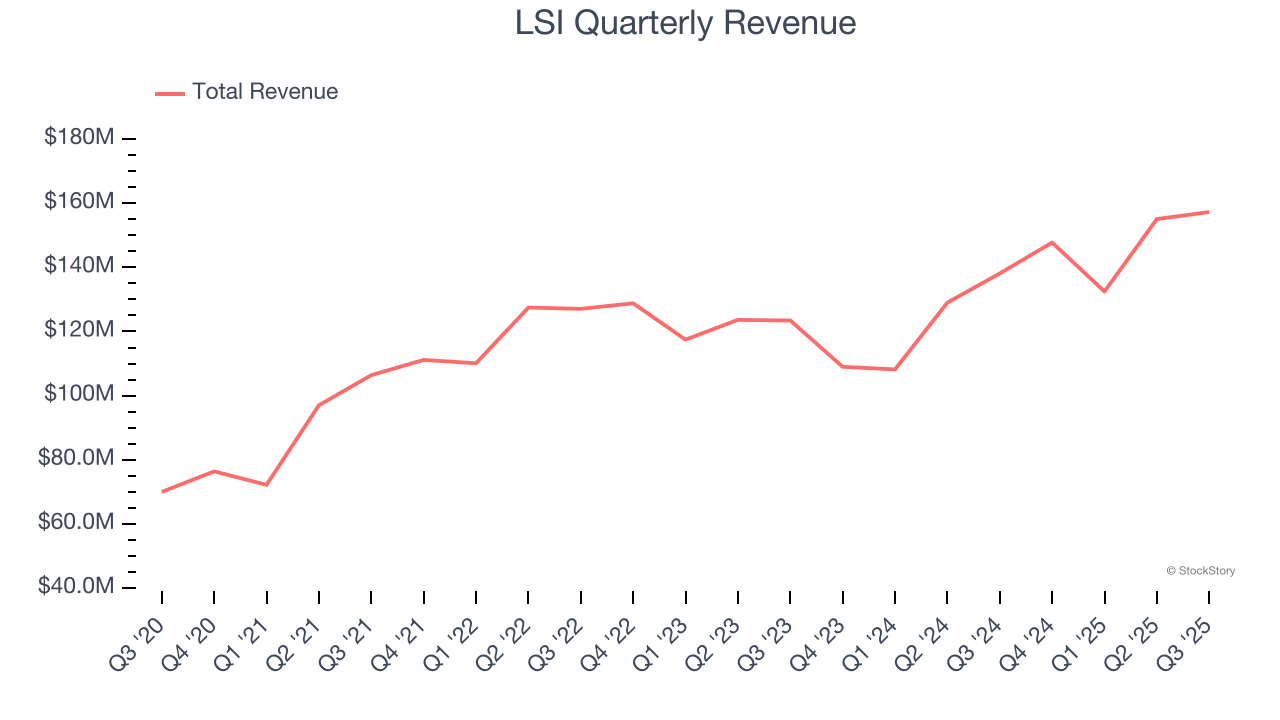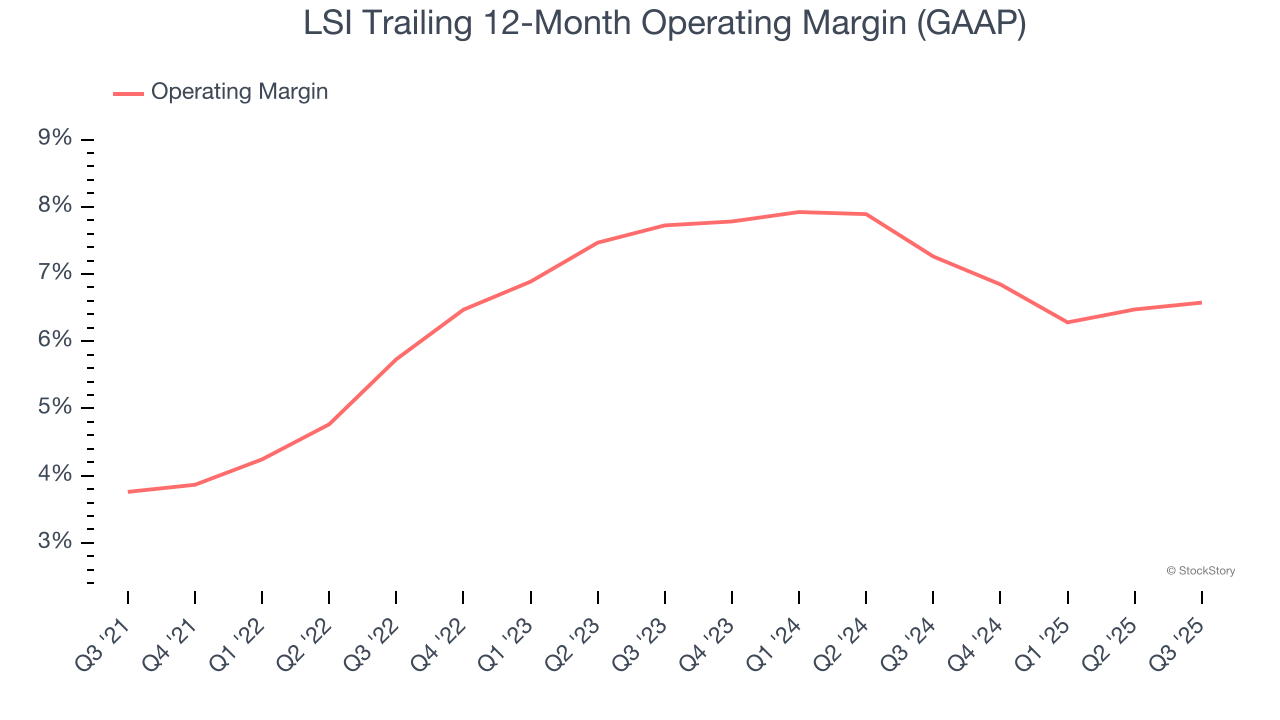
Commercial lighting and retail display solutions provider LSI (NASDAQ:LYTS) reported revenue ahead of Wall Streets expectations in Q3 CY2025, with sales up 13.9% year on year to $157.2 million. Its non-GAAP profit of $0.31 per share was 10.7% above analysts’ consensus estimates.
Is now the time to buy LSI? Find out by accessing our full research report, it’s free for active Edge members.
LSI (LYTS) Q3 CY2025 Highlights:
- Revenue: $157.2 million vs analyst estimates of $149.5 million (13.9% year-on-year growth, 5.2% beat)
- Adjusted EPS: $0.31 vs analyst estimates of $0.28 (10.7% beat)
- Adjusted EBITDA: $15.67 million vs analyst estimates of $14.92 million (10% margin, 5% beat)
- Operating Margin: 7%, in line with the same quarter last year
- Free Cash Flow was -$292,000, down from $11.09 million in the same quarter last year
- Market Capitalization: $678.6 million
“Strong execution and favorable demand conditions supported a successful start to our fiscal year 2026, highlighted by a combination of solid organic sales growth, improved margin realization, and the impact of Canada’s Best Holdings, which we acquired in March 2025,” stated James A. Clark, President and CEO of LSI.
Company Overview
Enhancing commercial environments, LSI (NASDAQ:LYTS) provides lighting and display solutions for businesses and retailers.
Revenue Growth
Reviewing a company’s long-term sales performance reveals insights into its quality. Even a bad business can shine for one or two quarters, but a top-tier one grows for years. Luckily, LSI’s sales grew at an incredible 15.6% compounded annual growth rate over the last five years. Its growth beat the average industrials company and shows its offerings resonate with customers.

We at StockStory place the most emphasis on long-term growth, but within industrials, a half-decade historical view may miss cycles, industry trends, or a company capitalizing on catalysts such as a new contract win or a successful product line. LSI’s annualized revenue growth of 9.6% over the last two years is below its five-year trend, but we still think the results suggest healthy demand. 
This quarter, LSI reported year-on-year revenue growth of 13.9%, and its $157.2 million of revenue exceeded Wall Street’s estimates by 5.2%.
Looking ahead, sell-side analysts expect revenue to grow 1.6% over the next 12 months, a deceleration versus the last two years. This projection doesn't excite us and implies its products and services will see some demand headwinds.
Software is eating the world and there is virtually no industry left that has been untouched by it. That drives increasing demand for tools helping software developers do their jobs, whether it be monitoring critical cloud infrastructure, integrating audio and video functionality, or ensuring smooth content streaming. Click here to access a free report on our 3 favorite stocks to play this generational megatrend.
Operating Margin
LSI was profitable over the last five years but held back by its large cost base. Its average operating margin of 6.4% was weak for an industrials business. This result isn’t too surprising given its low gross margin as a starting point.
On the plus side, LSI’s operating margin rose by 2.8 percentage points over the last five years, as its sales growth gave it operating leverage.

This quarter, LSI generated an operating margin profit margin of 7%, in line with the same quarter last year. This indicates the company’s cost structure has recently been stable.
Earnings Per Share
Revenue trends explain a company’s historical growth, but the long-term change in earnings per share (EPS) points to the profitability of that growth – for example, a company could inflate its sales through excessive spending on advertising and promotions.
LSI’s EPS grew at an astounding 50.7% compounded annual growth rate over the last five years, higher than its 15.6% annualized revenue growth. This tells us the company became more profitable on a per-share basis as it expanded.

We can take a deeper look into LSI’s earnings to better understand the drivers of its performance. As we mentioned earlier, LSI’s operating margin was flat this quarter but expanded by 2.8 percentage points over the last five years. This was the most relevant factor (aside from the revenue impact) behind its higher earnings; interest expenses and taxes can also affect EPS but don’t tell us as much about a company’s fundamentals.
Like with revenue, we analyze EPS over a shorter period to see if we are missing a change in the business.
For LSI, its two-year annual EPS growth of 3.3% was lower than its five-year trend. We hope its growth can accelerate in the future.
In Q3, LSI reported adjusted EPS of $0.31, up from $0.26 in the same quarter last year. This print easily cleared analysts’ estimates, and shareholders should be content with the results. Over the next 12 months, Wall Street expects LSI’s full-year EPS of $1.11 to grow 9.9%.
Key Takeaways from LSI’s Q3 Results
We were impressed by how significantly LSI blew past analysts’ revenue expectations this quarter. We were also glad its EBITDA outperformed Wall Street’s estimates. Zooming out, we think this was a solid print. The stock remained flat at $22.99 immediately after reporting.
LSI put up rock-solid earnings, but one quarter doesn’t necessarily make the stock a buy. Let’s see if this is a good investment. The latest quarter does matter, but not nearly as much as longer-term fundamentals and valuation, when deciding if the stock is a buy. We cover that in our actionable full research report which you can read here, it’s free for active Edge members.
